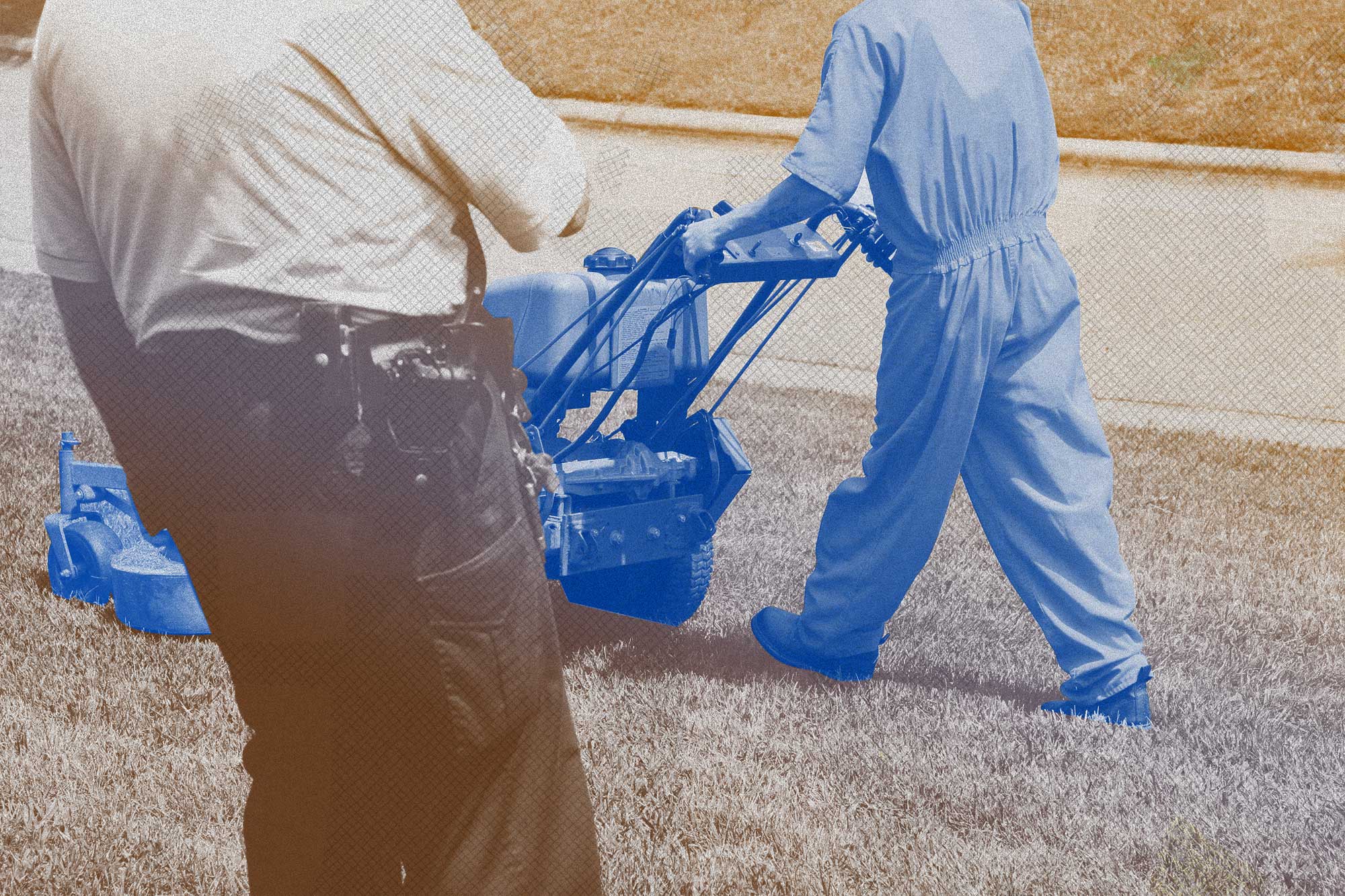Federal Prisons Official Used Prison Labor For Work On His Church
The Bureau of Prisons’ South Central regional director utilized incarcerated people from a Texas prison to work on a landscaping project at his church.

A high-ranking Federal Bureau of Prisons official used incarcerated people from a Texas prison to provide labor for his church to finish a landscaping project it couldn’t afford. On two occasions last year, six men incarcerated at the Federal Correctional Institution (FCI) Seagoville worked on the church for meager wages in what some say is a clear-cut case of prison labor exploitation.
Two Bureau of Prisons (BOP) employees speaking the condition of anonymity because they are not authorized to speak to the media told The Appeal about the arrangement between John Caraway, who is the BOP’s South Central regional director, and the Life Church in Midlothian, Texas, which is about 35 miles from the Seagoville prison.
Caraway is in charge of 21 federal prisons in Texas, Louisiana, Oklahoma, New Mexico, and Arkansas, which house roughly 29,000 people. “Every staff member I talked to was pretty disgusted,” said one BOP employee. “On its face we’ve always been told it’s abuse of inmate work or inmate management to have them come out and do things personally. We have community service projects to release them to the city and to the county every once in a while but it’s not a personal thing, it’s not my soccer field where I coach.”
In March and May 2018, the prisoners were paid 49 cents per hour plus an overall $30 bonus for a total of five eight hour work days at the church. The work included “a few church improvement projects, such as planting of trees and shrubs, lawn, and property line clean-up,” according to a memo from the Seagoville warden to Caraway obtained by The Appeal. One BOP employee said Caraway told the warden that he had cleared the work with a BOP ethics hotline in Washington, D.C.
Caraway did not respond to a request for comment.
$3.92 for a day’s work
The prisoners’ work on the church came months before the 2018 national prison strike in which incarcerated people protested poor wages and conditions of confinement. Among their demands was the eradication of prison slavery. Instead, they said, “all persons imprisoned in any place of detention under United States jurisdiction must be paid the prevailing wage in their state or territory for their labor.” In Texas, where the six men worked on Caraway’s church, the prisoners were paid $3.92 per day; the state’s minimum wage is $7.25 per hour. In BOP facilities, prisoners make 12 to 40 cents an hour.
Life Church Pastor Jason Exley confirmed to The Appeal that Caraway is a member of the 800-person congregation and said that the work came about after he submitted a letter to request the services of Seagoville prisoners. He declined to say whether the arrangement with the prison was the result of Caraway’s membership.
Exley explained that his church has a limited budget that was stretched by construction of a new facility. He brought in independent contractors and church volunteers alike for help but he said he could not afford the landscaping. Exley said he was “super proud” of the work that the prisoners performed on his church and praised them for their good attitudes. When informed of what the prisoners were paid for the work, Exley said: “I’ll tell you they made more money than our volunteers did. We had dozens and dozens of people who worked with no pay.”
Toussaint Losier, an assistant professor in the University of Massachusetts at Amherst. department of Afro-American studies and co-author of “Rethinking the American Prison Movement,” said Caraway’s arrangement with the church is “in line with the abuses of power that take place in almost mundane ways. … It sounds like this regional director was basically able to get his church repaired for next to nothing with this prison labor.”
“Worked to death” in the Texas heat
The BOP employee handbook says employees should not “accept any gift, personal service, or favor from an inmate,” and a bureau spokesperson said staff members are not allowed to have prisoners “work on projects for personal gain.” Additionally, employees said they are trained on ethical conduct annually. According to one employee, using prison labor for personal gain was common in the BOP until the 1980s. Staffers would have incarcerated people iron their uniforms, shine shoes, and wash their cars. If employees lived near a prison, they might use prisoners to landscape their yards, he said. But those practices were banned as the BOP adopted the current regulations on use of prison labor.
The Seagoville prisoners told one BOP employee that they were “worked to death” in the Texas heat but were happy to have the chance to be outside the prison. Opportunities like landscaping are rare at Seagoville since prisoners are released for community service projects only three times a year. The only other opportunity is clean-up work at the BOP’s regional office. Approximately 97 percent of federal prisoners eventually will be released, so opportunities for them to learn skills to successfully re-enter society are crucial. In December 2018, the federal government allocated $250 million for job training and rehabilitative programs over the next five years through the First Step Act—a move aimed at better equipping incarcerated people for success.
According to BOP employees, Caraway has notified the agency that he plans to retire and he is expected to leave his post within the next couple of months.
